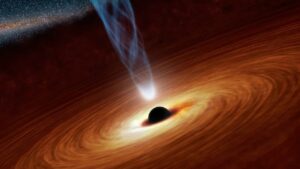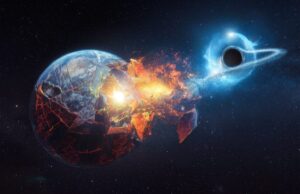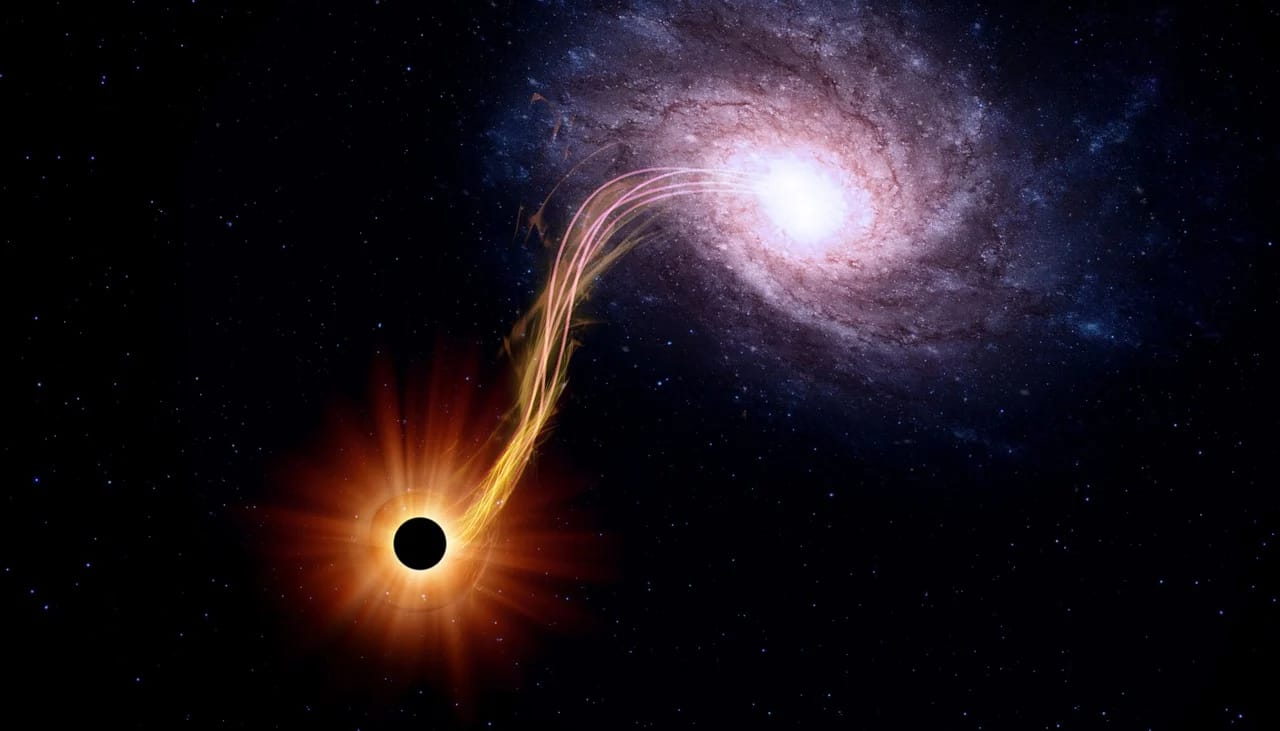Have you seen those extreme sci-fi Hollywood movies about Black holes? If you have seen them, you would know what an exciting term, the black hole is! It shows time travel! So what exactly is a Black hole? How is it formed? What are its significances? In this article, you are going to know everything you need to know about the Black Holes.
What are Black holes?

According to scientists, Black holes are the regions of space-time where the gravity is so heavy that nothing can escape it. This nothing includes particles and radiations. They are high in density and create deep gravity sinks. Beyond a limit, even light can’t escape the pull of a black hole’s gravity. So, theoretically, everything that approaches nearby a black hole – a star, planet or any other object – will be compressed under enormous pressure.
The thinking that it will be a big hole is incorrect to some extent. A black hole is a huge amount of matter that has been packed up in a very small area. This results in the enormous gravitational pull of it, which nothing can escape.
Formation of Black holes
The idea of massive spaces with high density which nothing could escape has been around for centuries. The existence of Black holes was predicted by Einstein’s theory of relativity. There are four types of black holes – stellar, supermassive, intermediate and miniature. Miniature black holes are believed to be made when the universe was formed. These are small horizons of darkness that were formed some13.7 billion years ago and then quickly went out of existence.
The most common type of black hole is Stellar which are formed by the death of a star. In this event, when the star is nearby its end, most of them cool down, inflate and become white dwarfs. But the large ones that are quite larger than the Sun, go out of existence with a massive bang with a huge explosion. This is known as Supernova. This leaves behind itself a core. In the remains of the supernova, there are no longer forces of attraction that would oppose gravity and thus the star begins to collapse. This collapse into a small point resulting in the formation of a black hole.
The supermassive black holes are believed to be formed when their galaxy was formed. The Theory of Relativity predicted that these black holes can be equal to billions of sun in mass. Most of these supermassive black holes are at the centres of their galaxies. Our Milky Way galaxy has its own supermassive black hole at its centre called the Sagittarius A* which is approximately four million times massive than our Sun.
Scientists predict that there are intermediate black holes as well, but haven’t been able to justify it with any proof as yet.
If we can’t see a black hole, then how can we say that black holes exist?
As black holes swallow everything in them including light, it is not possible to detect them just like other objects that glitter in the sky. However, the presence of black holes can be determined by their surroundings. They are extremely massive objects within a small area and thus have a great gravitational pull.
For example, if a cloud of the matter is drawn into an area, it could be probably due to extremely high gravitational force. Thus, the surrounding material could be funnelled in the form of a disk around the black hole. The particles would swirl around the black hole very fast and emit X-rays which can be detected on Earth. The motions of stars around the black hole can also help in the detection of them. If a star moves near a black hole, it can elongate a star and pull towards itself. Moving towards it, the temperatures may rise to millions of degrees and emit X-rays.
Sometimes, when matter moves close to a black hole, it bounces the matter away instead of pulling it inside. Bright jets of material travelling at near-relativistic speeds are created which can be seen from great distances.
What happens if you fall into a Black hole?

Suppose you were a free-floating object floating in mid-space near a black hole, you wouldn’t be able to see it. The only hint to know that it exists there is to experience the gravitational magnification effect it would have on the surrounding stars. As you move closer to the black hole, you would be stretched and squished in all directions. This process is called spaghettification by scientists. It is named so because the gravity of the hole will compress you horizontally and pull you long in the vertical direction, resulting in a spaghetti-like body structure.
If you jumped with your feet first into the black hole, the force on your toes will be much stronger than at your head. Thus, your body will be elongated in different directions and you would look like spaghetti. So as you fall into it, you might not be able to think about the existence on the other side of the hole as you would be dead by that time. This event was witnessed by astronomers in 2014 when they saw a star roam around a black hole. Soon, the star elongated and shredded soon after.
Could black holes make time travel possible?

When When a spaceship reaches the speed of light, time is relative to both the clock on Earth and in the spaceship. The time would seem to be much slower in the spaceship. So theoretically, as one gets closer to the black hole, time would be travelling normally but for observers, thousands of years would have passed. If someone possibly sees you falling into a black hole, he would see you getting slower and slower, taking years to just reach a point past where the light can’t go. As you move into the black hole, you would see the surrounding much faster. Hundreds of generations would pass on in some minutes or hours.
Could a black hole destroy the Earth?

No black hole is close enough to our solar system for our Earth to fall into it. Even if a black hole with the same mass as Sun, takes place of the Sun, then also the Earth would not fall into it and keep revolving around it. But the reality is the Sun isn’t a huge star to make into a black hole.
How many dimensions do black hole have?
Going out of the box, Black holes are 4-dimensional. 3 of these are dimensions of space and 1 dimension is of time.
Some interesting facts about Black Holes
- The first black hole to be confirmed was the Cygnus X-1. It is the brightest source of X rays in the Cygnus constellation.
- Since the discovery of Cygnus X-1, more than 50 black holes have been discovered where a normal star orbits a black hole.
- Approximately 10 million black holes are expected to be in the Milky Way.
- Last year, astronomers published the first-ever picture of a black hole. It is a 7 billion solar mass located at the centre of the M87 elliptical galaxy.
- According to Stephan Hawking, black holes are slowly diminishing.
- The biggest black holes might take up an unimaginable number of years to evaporate. They might take 10^100 years to evaporate.
- The nearest known black hole is nearly 1500 light-years away.
- The most distant black hole detected is located in a galaxy that is around 13.1 billion light-years away. It is called the Quasar. Large quantities of gases keep falling into it making its energy output much greater than the galaxy itself.
- A small black hole around 2-3 kilometres could eat up an entire star.
- A physicist named John Archibald Wheeler named the term Black hole in the 1960s when it was just a mere concept.
Conclusion:
Black holes are rather mysterious parts of our Universe. There are quite a few pieces of evidence about them but various incidents justify their existence. They are enormous bodies of huge gravitational forces trapped in a small area. Nothing can escape from a black hole and as it reaches the event horizon, everything stops and the massive temperatures will burn everything down. Most of the black holes are stellar in formation i.e. are formed when a star collapses and explodes. What remains is a core of huge gravity called a Black hole.
–––––––––––––
Recent posts:
- 19 Interesting facts about Stars – you probably never knew
- Some interesting facts of Earth in the Solar System
- How far is Earth from these Celestial Bodies?
- Which Asian Countries are at extreme risk from Climate Change?
